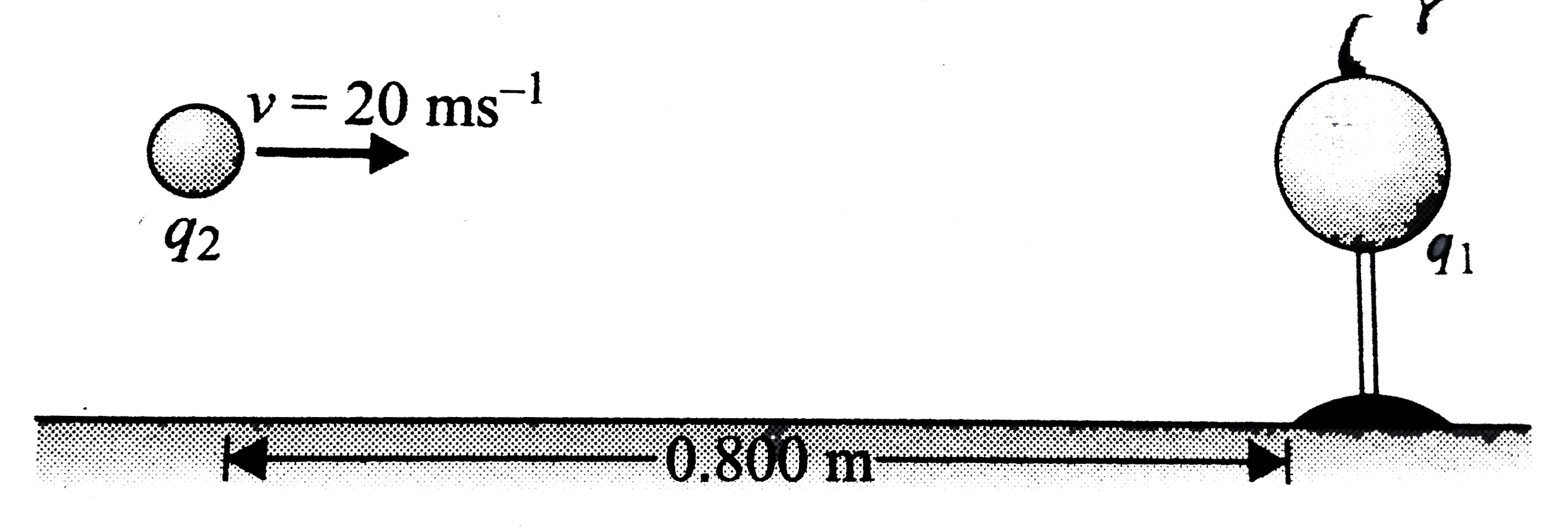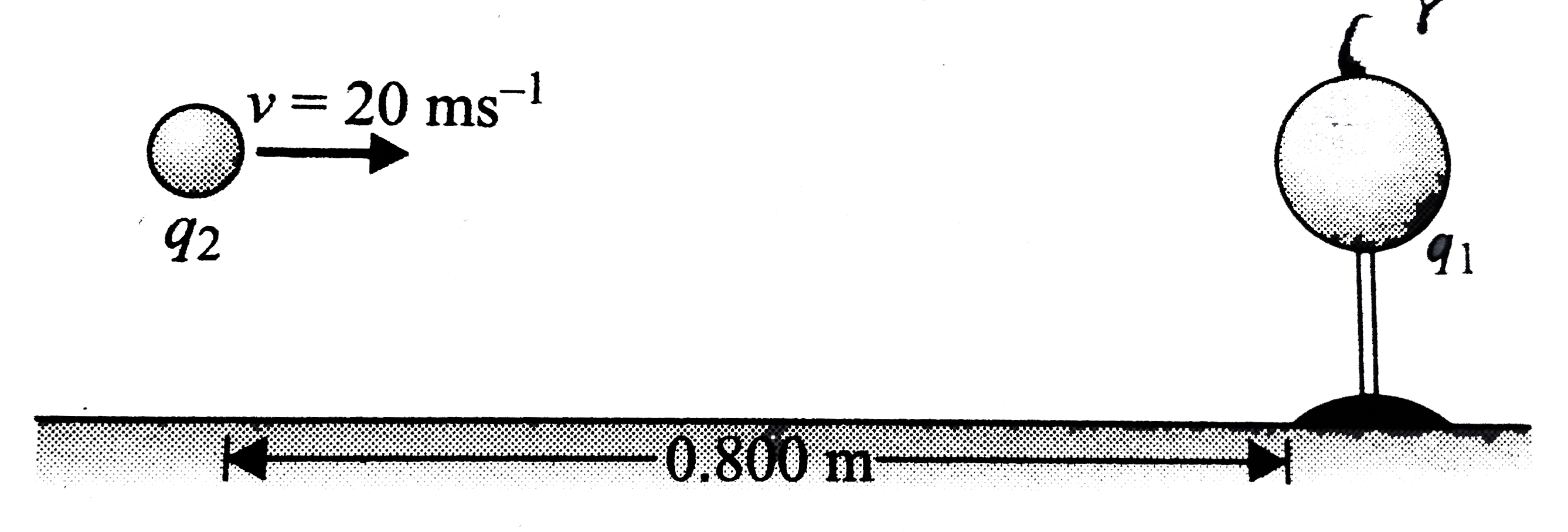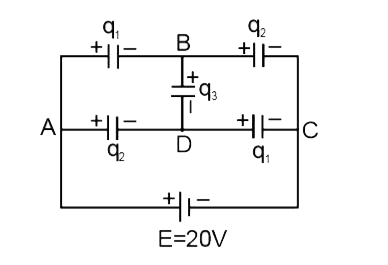A small metal sphere, carrying a net charge q1=−2μC, is held in a stationary position by insulating supports. A second small metal sphere, with a net charge of q2=−8μC and mass 1.50g, is projected toward q1. When the two spheres are 0.800m apart, q2 is moving toward q1 with speed 20ms−1 as shown in (Fig. 3.151). Assume that the two spheres can be treated as point charges. You can ignore the force of gravity.
 .
.
The speed of q2 when the spheres are 0.400m apart is.
2√10ms−1
2√6ms−1
4√10ms−1
4√6ms−1
The correct Answer is:C
Ei=Ki+Ui=12(0.0015kg)(20.0ms−1)2+k(2.00×10−6C)(8.00×10−6C)0.800m
=0.48J
Ei=Ef=12mv2f+kq1q2rf
vf=√2(0.48J−0.3t6J)0.0015kg=4√10ms−1
At the closest point, the velocity is zero.
0.48J=kq1q2r
or r=k(2.00×10−6C)(8.00×10−6C)0.48J=0.30m.
Topper's Solved these Questions
- ELECTRIC POTENTIALBOOK - CENGAGE PHYSICSCHAPTER - ELECTRIC POTENTIALEXERCISE - Integer
5 Videos
- ELECTRIC POTENTIALBOOK - CENGAGE PHYSICSCHAPTER - ELECTRIC POTENTIALEXERCISE - DPP 3.1
14 Videos
- ELECTRIC POTENTIALBOOK - CENGAGE PHYSICSCHAPTER - ELECTRIC POTENTIALEXERCISE - Multiple Correct
10 Videos
- ELECTRIC FLUX AND GAUSS LAWBOOK - CENGAGE PHYSICSCHAPTER - ELECTRIC FLUX AND GAUSS LAWEXERCISE - MCQ s
38 Videos
- ELECTRICAL MEASURING INSTRUMENTSBOOK - CENGAGE PHYSICSCHAPTER - ELECTRICAL MEASURING INSTRUMENTSEXERCISE - M.C.Q
2 Videos
Similar Questions
An isolated solid metallic sphere is given +Q charge. The charge will be distributed on the sphere
View SolutionA point charge q1=−5.8μC is held stationary at the origin. A second point charge q2=+4.3μC moves from the pont (0.26m0,0) to (0.38m,0,0). How much work is doen the electric force on q2?
View Solution
Knowledge Check
A small metal sphere, carrying a net charge q1=−2μC, is held in a stationary position by insulating supports. A second small metal sphere, with a net charge of q2=−8μC and mass 1.50g, is projected toward q1. When the two spheres are 0.800m apart, q2 is moving toward q1 with speed 20ms−1 as shown in (Fig. 3.151). Assume that the two spheres can be treated as point charges. You can ignore the force of gravity.
 .
.
How close does q2 get to q1 ?A0.20mB0.30mC0.10mD0.15mA positive point charge q is brought near a neutral metal sphere.
AThe sphere becomes negatively charges.BThe sphere becomes positively charged.CThe interior remains neutral and the surface gets non-uniform charge distribution.DThe interior becomes positively charged and the surface becomes negatively charged.A point charge q1=−1.0μC is held stationary at the origin. A second point charge q2=+2.0μC moves from the point (1.0m,0,0) to (2.0m,0,0). How much work is done by the electric force on q2?
A9mJB−9mJC−18mJD18mJ
The value of charge q1,q2andq3 as shown in the figure are

View SolutionA charge Q1 exerts some force on a second charge Q2. If a 3rd charge Q3 is brought near, the force of Q1 exerted on Q2 :-
View SolutionTwo spheres of equal mass A and B are given +q and -q charge respectively then
View SolutionThe insulated spheres of radii R1 and R2 having charges Q1 and Q2 respectively are connected to each other. There is
View SolutionMetallic sphere of radius R is charged to potential V. Then charge q is proportional to
View Solution